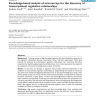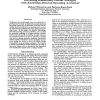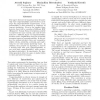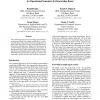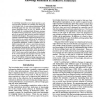134
Voted
BMCBI
2007
15 years 19 days ago
2007
Motivation: With more and more research dedicated to literature mining in the biomedical domain, more and more systems are available for people to choose from when building litera...
106
click to vote
BMCBI
2010
15 years 23 days ago
2010
Background: The large amount of high-throughput genomic data has facilitated the discovery of the regulatory relationships between transcription factors and their target genes. Wh...
108
click to vote
AI
2008
Springer
15 years 23 days ago
2008
Springer
Abduction is a fundamental form of nonmonotonic reasoning that aims at finding explanations for observed manifestations. This process underlies many applications, from car configu...
116
click to vote
GRC
2008
IEEE
15 years 24 days ago
2008
IEEE
Knowledge in knowledge bases have two categories: complete and incomplete. In this paper, through uniformly expressing these two kinds of knowledge, we first address four operator...
91
Voted
UAI
1993
15 years 1 months ago
1993
: This paper presents and discusses several methods for reasoning from inconsistent knowledge bases. A so-called argumentative-consequence relation, taking into account the existen...
109
Voted
AAAI
1994
15 years 2 months ago
1994
Techniques that traditionally have been useful for retrieving same-domain analogies from small single-use knowledge bases, such as spreading activation and indexing on selected fe...
AAAI
1993
15 years 2 months ago
1993
This paper discusses the important issue of knowledge base comprehensibility and describes a technique for comprehensibility improvement. Comprehensibility is often measured by si...
67
Voted
AAAI
1994
15 years 2 months ago
1994
The standard approach in AI to knowledge representation is to represent an agent's knowledge symbolically as a collection of formulas, which we can view as aknowledge base. A...
AAAI
1994
15 years 2 months ago
1994
In this paper we consider updates that are specified as rules and consider simple knowledge bases consisting of ground atoms. We present a translation of the rule based update spe...
78
Voted
AAAI
1994
15 years 2 months ago
1994
A knowledge acquisition tool should provide a user with maximum guidance in extending and debugging a knowledge base, by preventing inconsistencies and knowledge gaps that may ari...

